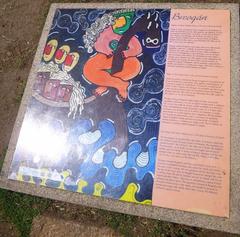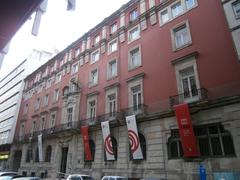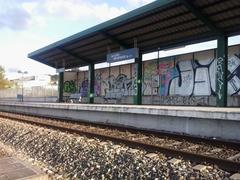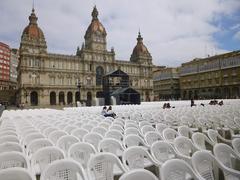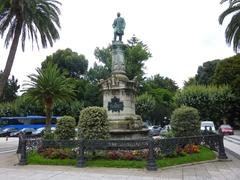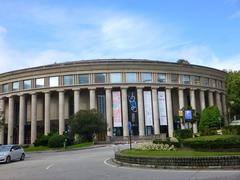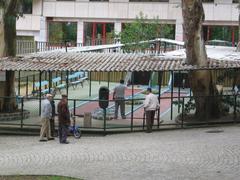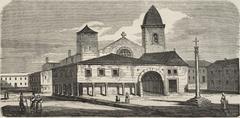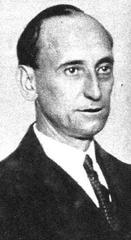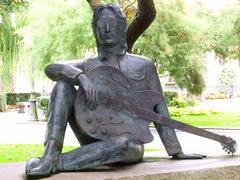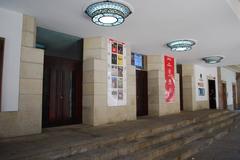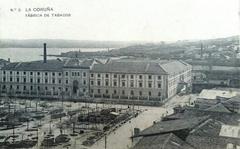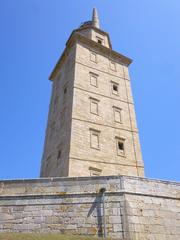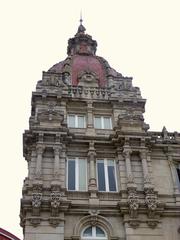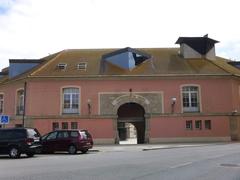
Cemetery of San Amaro Visiting Hours, Tickets, and Historical Significance in A Coruña
Date: 03/07/2025
Introduction
Nestled along the Atlantic coast in the historic city of A Coruña, Spain, the Cemetery of San Amaro stands as a testament to over two centuries of Galician history, artistry, and social evolution. Established in 1813 as part of early public health reforms, San Amaro reflects Enlightenment principles in urban planning and showcases a remarkable blend of architectural styles that chronicle the region’s cultural journey (Turismo da Coruña).
Internationally acclaimed as one of the world’s most beautiful cemeteries, San Amaro is both a living museum of funerary art and a vital green space, integrating neoclassical, modernist, neo-Gothic, and Celtic motifs. Its pantheons and monuments commemorate Galician luminaries such as Manuel Curros Enríquez, Eduardo Pondal, and Manuel Murguía, and offer visitors rich stories of local and national significance (Spain.info).
More than a burial ground, San Amaro fosters community through educational programs, guided tours, and commemoration events, while also providing accessible and free entry to all. This detailed guide will equip you with essential information for your visit, including history, hours, tickets, accessibility, travel tips, and nearby attractions—ensuring a meaningful experience at one of Galicia’s most treasured landmarks (Tour Travel and More, A Coruña Tourist Board).
Table of Contents
- Historical Origins and Context
- Architectural Features and Artistic Heritage
- Notable Burials and Historical Figures
- Cultural and Social Significance
- Visiting Information: Hours, Tickets, and Accessibility
- Travel Tips and Nearby Attractions
- Environmental and Social Value
- Frequently Asked Questions (FAQ)
- Conclusion and Further Resources
Historical Origins and Context
The Cemetery of San Amaro, established in 1813, is one of Spain’s oldest and most prominent cemeteries. Its creation arose from Enlightenment-era reforms that banned burials within churches due to public health concerns. San Amaro’s location, facing the Atlantic Ocean on what was then the city’s outskirts, provided a serene and practical solution, in line with the new regulations (Turismo da Coruña).
Architectural Features and Artistic Heritage
San Amaro Cemetery is internationally recognized for its architectural and artistic diversity. The grounds are divided into religious (Catholic), civil, and British sections. The British cemetery, acquired in 1867, remains closed to the public but is an important historical marker of A Coruña’s multicultural past (Spain.info).
Highlights
- Neoclassicism: The Chapel of Santo Amaro stands as a prime example of Galician neoclassical architecture, featuring harmonious proportions and minimal ornamentation.
- Modernist and Neo-Gothic Elements: Numerous chapels, mausoleums, and pantheons display modernist stained glass, wrought iron, and pointed arches, reflecting trends from the 19th to early 20th centuries.
- Celtic and Local Motifs: Celtic crosses and regional symbols are integrated throughout, underscoring Galician heritage.
- Unique Memorials: The dolmen with a rooted cruceiro at the regueifeiro Pena’s grave and collective monuments, such as the Broken Column (commemorating the 1901 general strike) and the Martyrs of Liberty, stand out for their historical and artistic value (Turismo da Coruña).
Notable Burials and Historical Figures
San Amaro is the final resting place for over 200 distinguished individuals, including:
- Manuel Curros Enríquez: Celebrated poet whose 1908 funeral gathered 40,000 mourners.
- Eduardo Pondal: Author of the Galician anthem lyrics, honored annually at his tomb.
- Wenceslao Fernández Flórez: Renowned author of El Bosque Animado.
- Manuel Murguía: Esteemed historian and founder of the Real Academia Galega.
- Juana de Vega: Liberal writer and political figure.
- Pedro Barrié de la Maza: Influential banker and philanthropist.
- Conchita Picasso: Sister of Pablo Picasso, whose early death marked the family’s history.
- Other Notables: Includes Alfonso Molina, the Vilar Ponte brothers, Emilio González López, and other figures central to Galician culture and politics (Spain.info).
Cultural and Social Significance
San Amaro is both a chronicle of Galicia’s evolution and an active participant in community life:
- Memorials to Social Movements: The Broken Column recognizes the 1901 general strike, a pivotal event in Galician labor history. The Martyrs of Liberty monument also commemorates those who fought for social justice (Turismo da Coruña).
- Artistic Heritage: The open-air museum quality of San Amaro, with its blend of architectural styles and funerary art, reflects the region’s changing tastes and values.
- Role in Local Traditions: San Amaro is a focal point for All Saints’ and All Souls’ Days, when families gather to honor their ancestors.
- European Recognition: Since 2013, San Amaro has been part of the European Cemeteries Route under the Association of Significant Cemeteries in Europe (ASCE) (ASCE).
Visiting Information: Hours, Tickets, and Accessibility
Hours
- April–September: 9:00 AM – 7:00 PM
- October–March: 9:00 AM – 6:00 PM
- Closed on major public holidays (Turismo da Coruña)
Admission
- Free entry for all visitors.
- Guided tours: Available during special events or by reservation; may require a small fee.
Accessibility
- Wide, paved paths and ramps provide good accessibility for visitors with disabilities.
- Benches and rest areas are located throughout.
- Interpretive panels in Spanish and Galician, with some QR codes for multimedia content.
Getting There
- Address: Avenida de Navarra, s/n, 15002 A Coruña.
- Public transport: City bus lines (notably 3, 3A, and 5) stop nearby (Tranvías de A Coruña).
- Parking: Limited street parking; public transport is recommended.
Travel Tips and Nearby Attractions
Tips
- Best times: Early mornings or late afternoons offer optimal lighting and a quieter atmosphere.
- Comfort: Wear sturdy shoes, as the terrain varies.
- Respect: Maintain a solemn demeanor; avoid loud noise and disruptive behavior.
- Photography: Permitted for personal use, but be sensitive around recent graves and during funerals.
Nearby Attractions
- Tower of Hercules: Roman lighthouse and UNESCO World Heritage Site.
- San Carlos Garden: Resting place of Sir John Moore.
- A Coruña Old Town (Cidade Vella): Historic quarter with shops and cafés.
- Museo Domus: Interactive science museum.
- Maria Pita Square: Iconic city center (Turismo de Galicia).
Environmental and Social Value
Environmental Integration
San Amaro’s 26,000 m² of leafy grounds blend with the Atlantic landscape, providing a tranquil environment that supports local biodiversity. Mature vegetation enhances air quality and offers habitats for birds and small mammals (Tour Travel and More).
Heritage Conservation
The cemetery is protected as a historic site, with ongoing preservation of both monuments and natural elements, and is included in the European Cemeteries Route for its commitment to sustainable heritage management (Wikipedia - Cemiterio de Santo Amaro da Coruña).
Community Engagement
San Amaro is a hub for cultural heritage walks, commemorative ceremonies, and community memory, promoting social inclusion and intergenerational dialogue (Art Nouveau Coruña).
Frequently Asked Questions (FAQ)
Q: What are the cemetery’s visiting hours?
A: Open daily from 9:00 AM to 7:00 PM in summer, and until 6:00 PM in winter. Closed on major public holidays.
Q: Is there an entrance fee?
A: No, admission is free.
Q: Are guided tours available?
A: Yes, especially during cultural events or by reservation; check with local tourism offices.
Q: Is the cemetery accessible for people with disabilities?
A: Yes, with paved paths and ramps.
Q: Can I visit the British cemetery section?
A: No, this section is private and closed to the public.
Q: Are there facilities on-site?
A: Public restrooms are available near the main entrance; no cafés inside, but options are nearby.
Conclusion
The Cemetery of San Amaro stands as a remarkable convergence of art, history, and cultural memory in A Coruña. Its unique blend of architectural styles, prominent burials, and integration with the city’s natural landscape make it both a serene retreat and a profound learning experience. Whether you’re a history enthusiast, an art lover, or a cultural traveler, San Amaro offers a rewarding visit that connects the past and present of Galicia.
Plan your visit today, explore the neighboring landmarks, and enrich your journey with guided tours or audio experiences. For the latest information, downloadable guides, and cultural updates, download the Audiala app and follow us on social media.
References and Further Reading
- Turismo da Coruña
- A Coruña Tourist Board
- Tour Travel and More
- Spain.info
- ASCE
- Wikipedia - Cemiterio de Santo Amaro da Coruña
- Tranvías de A Coruña
- Concello da Coruña
- Art Nouveau Coruña
- Turismo de Galicia



